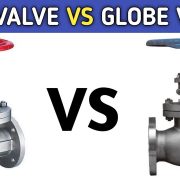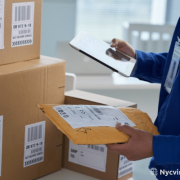Introduction
In recent years, connective ecommerce and dropshipping have become increasingly popular as more and more people look for ways to make money online. While they both involve selling products online, the two have significant differences. We will go into more depth about these distinctions in this essay.
E-commerce:
E-commerce is the practice of buying and selling goods and services online. It involves creating an online store or website where customers can browse products, make purchases, and deliver them to their doorstep. The seller owns and manages the inventory and takes care of the shipping and handling of the products.
One of the main advantages of e-commerce is that the seller has complete control over the products they sell, the prices they set, and the shipping and handling process.
This allows the seller to tailor their business to their specific needs and target market. Additionally, connective ecommerce will enable sellers to build their brand and create a loyal customer base.
However, connective ecommerce also has some drawbacks. The most challenging task is controlling the inventory. This can be time-consuming and expensive, especially if the seller has many products. Additionally, e-commerce requires significant time and money to set up and maintain.
Dropshipping:
A shop does not maintain the goods it sells in stock when using the dropshipping technique of retail fulfillment. Alternatively, when a business sells goods, it buys the item from a third party and ships it straight to the client. Because of this, the vendor is never present when the goods are used or shown.
One of the main advantages of dropshipping is that the seller does not need to worry about inventory management. This means the seller can focus on marketing and growing their business rather than spending time and money on inventory. Dropshipping allows the seller to offer a broader range of products without investing in stock upfront.
However, dropshipping also has some disadvantages. One of the main challenges is that the seller has less control over the products because they rely on the supplier to fulfill orders.
Product quality, delivery schedules, and customer service problems may result from this. Additionally, dropshipping margins tend to be lower than in e-commerce because the seller is paying a markup to the supplier.
Difference Between Connective Ecommerce And Dropshipping:
Inventory Management:
In connective ecommerce, the seller manages inventory and ensures that products are available when customers want to purchase them. In dropshipping, the seller does not need to worry about inventory management because the supplier takes care of it.
Shipping And Handling:
In connective ecommerce, the seller is responsible for shipping and handling products to customers. In dropshipping, the supplier is responsible for shipping and handling.
Control Over Products:
In connective ecommerce, the seller has complete control over the products they sell, the prices they set, and the shipping and handling process. In dropshipping, the seller has less control over the products because they rely on the supplier to fulfill orders.
Read Also: 10 Expert Ecommerce Growth Strategy For 2023
Consider When Comparing Connective Ecommerce And Dropshipping:
Startup Costs:
E-commerce can be expensive to set up and maintain because the seller needs to invest in inventory, warehousing, and shipping infrastructure. On the other hand, drop shipping has lower startup costs because the seller does not need to purchase merchandise upfront.
Product Selection:
E-commerce sellers have more control over the products they sell and can choose to specialize in a specific niche or product category. In dropshipping, the choice of products is limited to what the supplier offers.
Branding:
E-commerce allows sellers to build a brand and create a unique customer experience. In dropshipping, the seller may have less control over branding because they rely on the supplier’s product descriptions and packaging.
Customer Service:
In e-commerce, the seller is responsible for providing customer service and handling returns and refunds. The supplier may handle customer service in dropshipping, but the seller is still responsible for managing the customer relationship.
Profit Margins:
E-commerce typically has higher profit margins because the seller can purchase products in bulk and sell them at a markup. Dropshipping margins tend to be lower because the seller is paying a markup to the supplier.
Conclusion
In conclusion, connective ecommerce and dropshipping are two different ways to sell products online. While e-commerce involves managing inventory, shipping, and handling, dropshipping acts as a middleman between the customer and the supplier.
Both of these methods have advantages and disadvantages, and it’s up to the seller to decide which is best for their business. Ultimately, the decision will depend on the seller’s goals, resources, and target market.







Comments